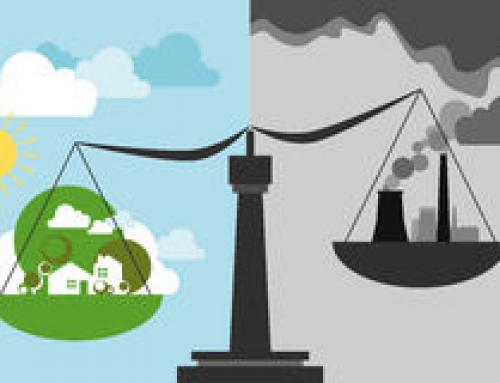We are on a quest to understand how a business can run as efficiently as a forest.
So far we have seen how LEAN thinking can reduce waste, and how a value stream can become balanced through push and pull, and feedback loops. We acknowledged that all resources come with some cost, be it financial, social or environmental.
Benyus suggests that a business organization can be equated to a complex ecosystem, demonstrating the ultimate balance between consumption, production and profitability.
A FOREST’S LAWS OF SUCCESS
Benyus’ business strategy is to emulate a forest’s 10 laws of success:
- Use waste as a resource (successful waste recovery can be a huge cost saver).
- Diversify and cooperate to fully use available habitat (arteries for product outflows need veins for eventual return of raw materials; the more complex an organization grows, the greater the co-operation needed between diverse entrepreneurs for global profitability).
- Harness and use energy efficiently (the latest Climate Change Paris conference indicates positive signs that we are starting to “get” this).
- Optimize rather than maximize (decelerate consumption of raw materials, accentuating quality instead of quantity).
- Use raw materials sparingly (focus more on leasing goods and providing services).
- Don’t foul (where poisonous substances are required, produce and use in small doses (aka the snake venom approach), reduce waste via just-in-time manufacturing, decentralize production to minimize pollution during transportation).
- Don’t draw down resources (use renewables slower than their regeneration or substitution)
- Maintain balance with the biosphere (again, the latest Climate Change Paris conference gives us some hope).
- Operate on information (heed feedback to maintain equilibrium; respond to warning signs).
- Shop locally (an organization that optimally utilizes its local attributes is typically more stable, more in tune with its surroundings).
Kenneth Boulding, an American economist, in 1966, contrasted the “cowboy economy,” of limitless frontiers of resources and waste, to the “spaceship economy” where everything is continuously recycled. Biomimicry (innovation inspired by Nature) and cradle-to-cradle design, epitomize a closed-loop economy. Circular design re-imagines products to be 100% recyclable or 100% compostable, for both economic and environmental benefit.
CLOSED-LOOP PRINCIPLES
Boyd’s 5 business models, described in The Optimistic Environmentalist, are founded on these closed-loop principles:
- circular supplies (renewable energy, bio-based raw materials, fully recyclable inputs,
- resource recovery (recovering or repurposing previously used or by-product materials),
- products as services ( incentives for product longevity and reuseability, leasing instead of selling),
- product life extension (durability instead of disposability),
- sharing platforms (collaborative business models, sharing underutilized items).
The above discourse suggests that economies, companies and communities can flourish if all forms of social and natural capital are recognized and accounted for all along the value chain.
Hawkins, Lovins and Lovins outline 4 strategies to enable this:
- Use resources more effectively, slowing depletion, reducing pollution while enabling the economy.
- Design systems and workflows by mimicking nature, by reusing materials in closed loop cycles, while minimizing pollution.
- Shift from batch production of goods to a flowing service model. This stimulates incentive to reuse, reduce, recycle continuously while adding value.
- Restore and expand resources that have already been compromised, to regenerate and sustain abundance across social, environmental and economic spectra.
SUMMARY
A business can function with optimal efficiency, in harmony with its environment. We can minimize MUDA and grow abundantly by mimicking a forest’s closed-loop efficiency if we strike the right balance.
Links to other blogs in this series:
How to Run a Business like a Forest – Part 1 of 3
How to Run a Business like a Forest – Part 2 of 3
Now, to request an Excel checklist to start running your business like a forest, please email us: [email protected]
Thank you for reading my Blog series. Fay Rakoff
REFERENCES
Benyus, J. M. (1997). Biomimicry. United States: HarperCollins Publishers Inc.
Boulding, K. (1965) ‘Earth as a Space Ship’. Washington State University, Committee on Space Sciences. Kenneth E. Boulding Papers, Archives (Box # 38), University of Colorado at Boulder Libraries.
Boyd, D. R. (2015). The Optimistic Environmentalist. Toronto, Canada: ECW Press
Brue, G. (2015). Six Sigma for Managers Second Edition. United States: McGraw-Hill Education.
Carson, R. (1962). Silent Spring. United States: Houghton Mifflin
Deming, W. E., Orsini, J., Deming Cahill, D. (2012). The Essential Deming. United States: McGraw-Hill
Gundling, E., Caldwell, C., Cvitkovich, K. (2015). Leading across New Borders. New Jersey: John Wiley & Sons, Inc.
Hawken, P., Lovins, A., Lovins, L. H. (1999). Natural Capitalism. United States: Back Bay Books
Koch, C. (2015) Good Profit. United States: Crown Business
Meadows, D. (2008). Thinking in Systems. United States: Chelsea Green Publishing Company
Ries, E. (2011). The Lean Startup. New York: Crown Business.
Womack, J. P., & Jones, D. T. (2003). Lean Thinking. United States: Free Press






Leave A Comment